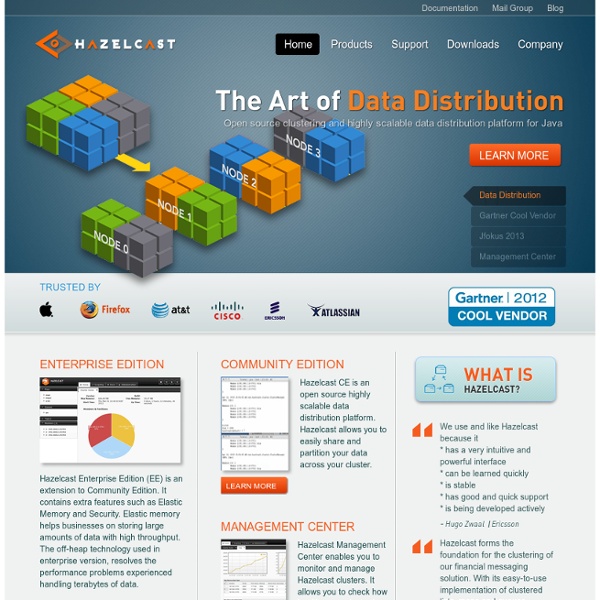



Multicast In computer networking, multicast is the delivery of a message or information to a group of destination computers simultaneously in a single transmission from the source. Copies are automatically created in other network elements, such as routers, but only when the topology of the network requires it. At the Data Link Layer, multicast describes one-to-many distribution such as Ethernet multicast addressing, Asynchronous Transfer Mode (ATM) point-to-multipoint virtual circuits (P2MP) or Infiniband multicast. IP multicast[edit] IP multicast is a technique for one-to-many communication over an IP infrastructure in a network. The most common transport layer protocol to use multicast addressing is User Datagram Protocol (UDP). IP multicast is widely deployed in enterprises, commercial stock exchanges, and multimedia content delivery networks. Other multicast technologies[edit] Other multicast technologies not based on IP multicast are more widely used. See also[edit] References[edit]
NoSQL Benchmarking NoSQL is the talk of the town. And we have already covered what it is for in one of our previous blogs. Today I would like to share the NoSQL benchmark test results we have recently conducted. It will help you to understand if the soon to develop system is compatible to NoSQL, and which NoSQL product to select. In this article we will reveal the characteristics of Cassandra, HBase and MongoDB identified through multiple workloads. Why NoSQL? The interest in NoSQL continues to rise because the amount of data to process continues to increase. Why are they using NoSQL instead of RDBMS? Twitter is still using MySQL. RDBMS is known to experience burden when processing tera or peta unit large sized data. There is no single correct answer in processing bulk data. Out of the RDBMSs, Oracle is an exception since Oracle’s performance and functions, such as mass data processing or data synchronization, are far more superior to other RDBMS. Benchmarking Tests using YCSB The test workload is as follows.
Ehcache | Performance at Any Scale Java collections %u2013 Are There Alternatives? 0inShare The built-in collections for Java have good performance and are nice to use – especially with the new for-loop pattern. But are there alternatives? And if so, why should I use them? (Please use the comment functionality ) The following collection implementations I found on the web: There are also some older projects, which seem to be abandoned: If you need real big data in memory you should consider a lightweight database (or a real one??) From
Grid computing The use of widely distributed computer resources to reach a common goal Grids are a form of distributed computing whereby a "super virtual computer" is composed of many networked loosely coupled computers acting together to perform large tasks. For certain applications, distributed or grid computing can be seen as a special type of parallel computing that relies on complete computers (with onboard CPUs, storage, power supplies, network interfaces, etc.) connected to a computer network (private or public) by a conventional network interface, such as Ethernet. This is in contrast to the traditional notion of a supercomputer, which has many processors connected by a local high-speed computer bus. Overview[edit] Grid computing combines computers from multiple administrative domains to reach a common goal,[3] to solve a single task, and may then disappear just as quickly. Comparison of grids and conventional supercomputers[edit] Design considerations and variations[edit] The provider side[edit]
HBase - Apache HBase Home Sebastian K The Myth Of Version 2.0 Have you ever observer two developers standing near the coffee machine and having the following conversation: Developer 1: It took me the whole week to find out what XXX does. Now imagine you ask those developers which version they are working on. Developer: Version 2.xx.yy why do you ask? The Reality So what are the chances that a rewrite does not end in a disaster? If you fail with the current version the next will be a disaster. It is again confirmed in Uncle Bob Martin's recent post "The Big Redesign In The Sky" [1] and it seems to be one of the few things the software industry agrees upon (see the references). Replacing "Off The Shelf" Software I personally never had the chance to completely mess up with a reimplementation. Is There No Hope? If software for which you do not have the source code is the problem, there is usually no alternative to replace it. Cleaning Up As a matter of fact, most developers don't know how to clean up their code. References
Osiris (Serverless Portal System) Osiris Serverless Portal System (usually abbreviated as Osiris sps or Osiris) is a freeware program used to create web portals distributed via peer-to-peer networking (P2P) and autonomous from centralized servers. It is available for Microsoft Windows and GNU/Linux operating systems. Unlike common tools used to publish information on the Internet, such as content management systems, Internet forums or blogs based on a centralized system, the data of an Osiris portal are shared (via P2P) between all its participants. Because all the contents necessary for navigation are replicated on every computer, the portal can be used without a central server. Thus, the portal is always accessible because it is immune to denial of service attacks, Internet service provider limitations (such as traffic shaping and censorship) and hardware failure. Osiris was started by a developer named "Berserker" as an outgrowth of KeyForum. The system is anonymous.
Redis